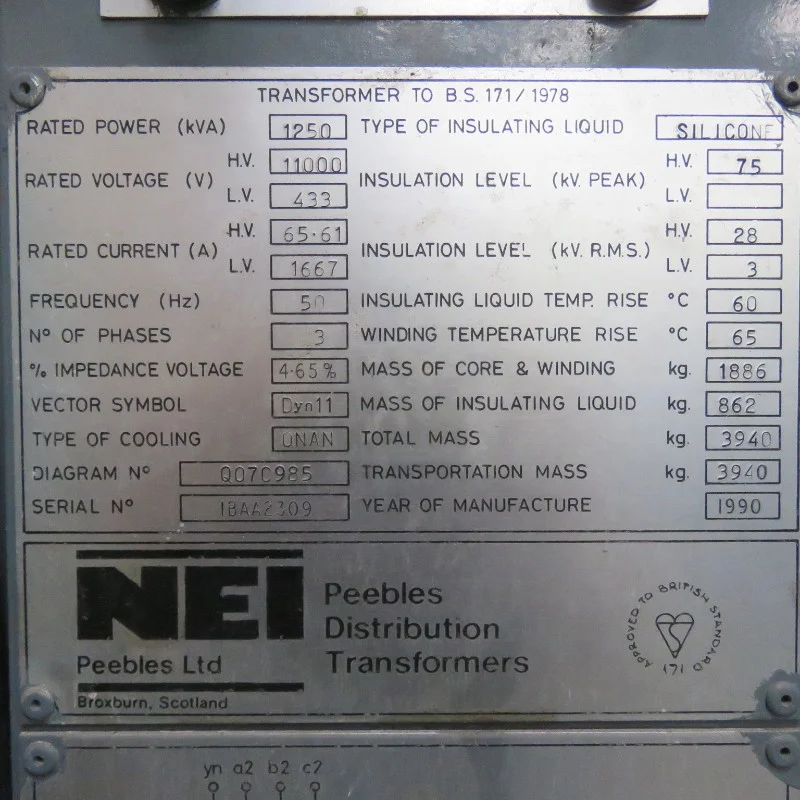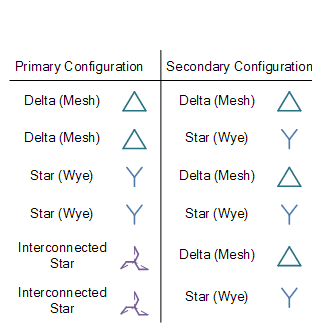A transformer is the device that makes power systems flexible, scalable and help save cost by reducing power loss. Here you can learn the selection and sizing of transformers and code & standards related to transformers.
Transformer Nameplate

Selection and sizing of a transformer is the process of determining the basic transformer parameters such kVA, primary and secondary voltages and operational frequency. In addition to these winding conductor material, winding connection, cooling methods, power factor, mounting arrangements, type and efficiency are also considered during selection.
Parameters considered during the sizing of transformers
Primary and secondary voltages
Primary voltage is the voltage available, that is applied to the input terminals of the transformer.
Secondary voltage is the voltage required by the load. This is the output voltage of the transformer.
If the voltage available is 11kV, three-phase and the voltage required by the load is 415V, three-phase, you must go for transformer whose primary is rated to 11kV three-phase and secondary is rated at 415V, three-phase.
kVA rating
Calculation of kVA is crucial during the selection and sizing of transformers. kVA is the maximum apparent power that a transformer can handle. It depends on load current, voltage and power factors. The kVA rating can be calculated using the following formula:
For single phase transformers:
kVA = (Load voltage x Load current) / (1000 x Load Power factor)
For three phase transformer,
kVA = (1.723 x Load voltage x Load current) / (1000 x Load Power factor)
Operational frequency
Transformers are designed to operate only at a particular frequency. The rated current, magnetizing current and the kVA rating are directly proportional to the frequency. Therefore, a transformer should be designed to operate at its rated frequency only. The rated frequency of the transformer should be same as that of the input supply and the operating frequency of the load.
Winding connections
Winding connections do not matter for single-phase transformers. But when it comes to three-phase transformers, the selection of winding connection matters. Various primary and secondary winding configurations are shown below:
Other factors
In addition to the above, various other factors such as the transformer type (whether dry type or oil immersed), power factor, voltage regulation, operating temperature, mounting arrangements, cooling arrangments and impulse withstand capacity of the transformer are also taken in account during the selection process.
Summary
The primary and secondary voltages, kVA, type and frequency are basic data needed during the sizing of transformers. Based on those data, we can select a transformer that can fulfill the other factors (mentioned above) from any manufacturers.

Very educative